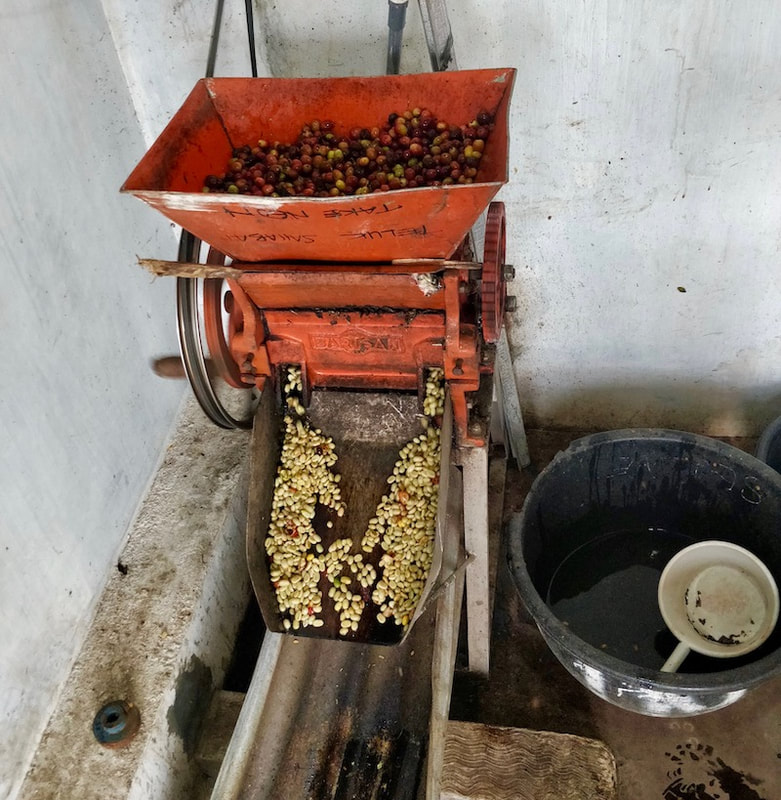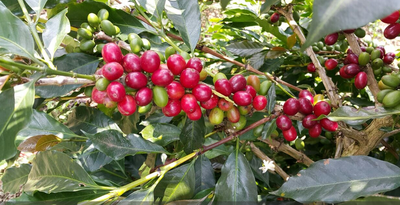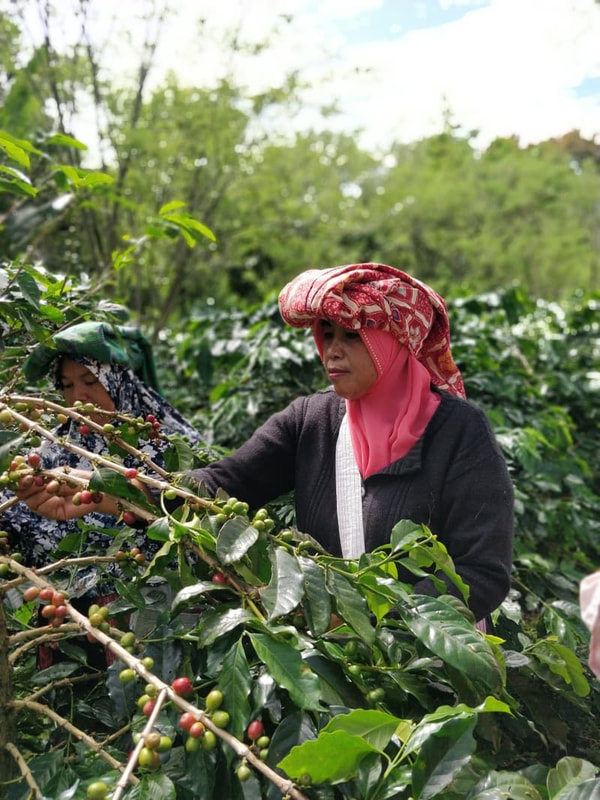Sumatra Mandheling GR1 TP KSU Buana Mandiri
FAIRTRADE ORGANIC
|
Quick Facts
Region: Village of Pondok Ulung, subdistrict of Bener Meriah, province of Aceh.
Process: Giling Basah - Semi Washed Altitude: 1200-1500 masl Botanical varieties: Catimor, Ateng, Timtim, and Bourbon Harvest: Harvest Period: April to June (Fly Crop) and October to December (Main Crop) First Shipment: June Cupping Notes
Ref: 5138
|
Typical Indonesian coffee processing explained
|
KSU Buana Mandiri
This coffee is produced by small farmers pertaining to this cooperative grouping 1,009 families, each owning less than 1 ha of land. Pulp is the main source for fertilizer and animals are fed with tree leaves that also serve as shade for coffee trees. During the coffee off-season, farmers grow other farm products such as chili and yam to support their families.
This coffee is produced by small farmers pertaining to this cooperative grouping 1,009 families, each owning less than 1 ha of land. Pulp is the main source for fertilizer and animals are fed with tree leaves that also serve as shade for coffee trees. During the coffee off-season, farmers grow other farm products such as chili and yam to support their families.





